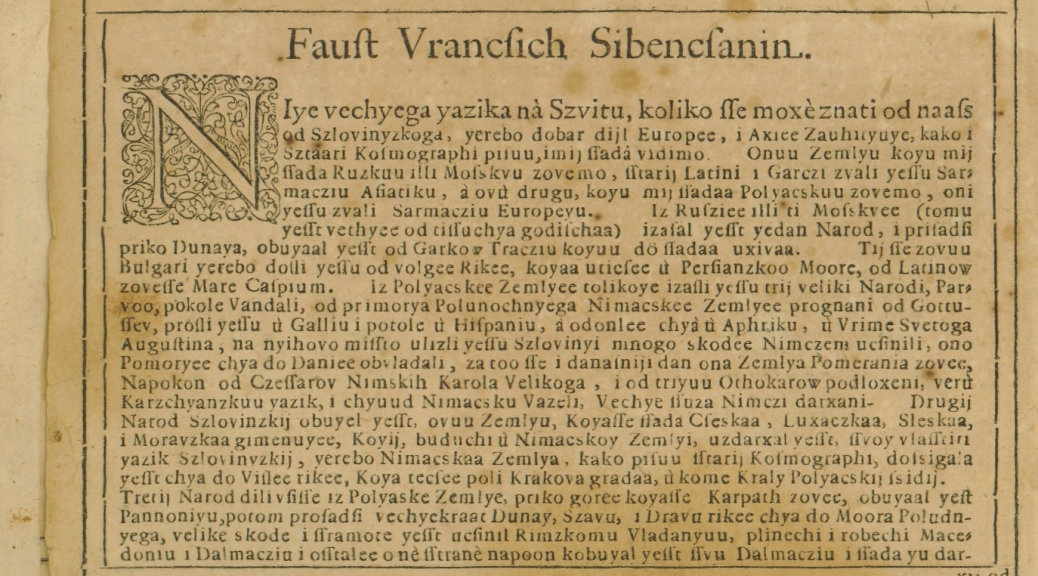Faust Vrančić is a genuine representative of renaissance. He was born in 1551 in Šibenik. His interest range was very wide. He was a famous scientist, diplomat, engineer, polyhistor, royal secretary, priest and a bishop.
Education and work
Faust’s uncle Antun Vrančić took care about his education. His uncle was a famous and respectable diplomat and Hungarian primate. As a young boy, Faust went to Hungary where he gained interest in specific directions of in humanistic sciences.
After his elementary education, he finished study of philosophy and law. He became a member of Croatian fraternity of Saint Jerome in Rome and a secretary of King Rudolph II. in Prague. Presence on a royal court, encouraged Vrančić to study natural sciences and engineering. His everyday contact with famous scientists, such as astronomers Tyche Brache and Johannes Kepler, encouraged him to be even more dedicated to his work.
After his work in Prague, Vrančić moved to Dalmatia and Italy. King Rudolf II. appointed him a bishop of Chanad and as a Royal advisor for Hungary and Transylvania.
He was oriented at the field of comparative lexicography. In 1595. he published a five – languaged dictionary with 5,000 entries for each language: Latin, Italian, German, Croatian and Hungarian. He named it Dictionary of five noblest languages of Europe (Dictionarium quinque nobilissimarum Europae linguarum, latinae, italicae, germanicae, dalmaticae et ungaricae). Dictionary was published in six editions, from which three were internationally published.
Machinae novae and introduction to technical sketches of Leonardo da Vinci
In 1605. Vrančić left the Royal court and joined the Barnabites of Saint Paul of Tarsus. He was especially dedicated to construction of bridges, organization of agriculture and problems of upstream river flow. He improved regulation of the flow of Tiber river, and he built fountains in Venice.
His close friend introduced him to technical sketches of Leonardo da Vinci. Those sketches inspired Vrančić for exploring machine constructions. As a result of his researching, Vrančić published another book in 1595., Machinae novae (New machines). It was one of the most significant pieces in technical field in seventeenth century. It contains construction of 59 different devices related to engineering. Book also contains a parachute display – Homo volans ( flying man). Vrančić tested it himself.
Although at that time the famous Leonardo da Vinci had rough parachute sketches, Vrančić was the first one who published them. His parachute was in a quadrangular form, and the da Vinci’s one was in pyramidal form. All drawings were done in cooper etching which made the book the most beautiful one of that time in Croatia.
Because of his illnes, Vrančić left Rome wishing to spent his last days in Šibenik. Along the way, he stopped in Venice, to publish Logica nova. He past away there, on 27th of February in 1617. According to his last will, Vrančić was buried in Croatia, at island of Prvić, near Šibenik.
Memorial center Faust Vrančić was opened at Prvić luka on island of Prvić.
